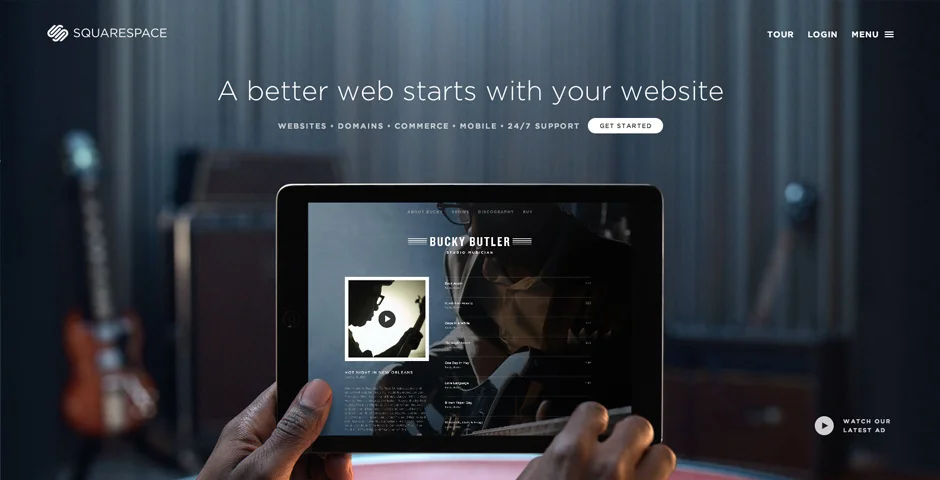Let’s face it – you are struggling to get your startup on track but failing to manage everything on your own. Well, you surely don’t have enough budget and investors to assemble a top-tier marketing team, nor do you have enough time to learn the basics of everything and become jack-of-all-trades.
In fact, the age of “if you build it, they will come” strategy is long gone and is never going to provide you the same exposure that it did in the past. However, making use of some tools will get you started on the right track and give you enough pace to kick-start your profitable business in no time.
Check out these 5 must-have tools for every startups.
1. Content Marketing Tools
It has been reported that 58% eight percent of B2B marketers increased their budget for content marketing in 2015. Content marketing tools are considered as the backbone of most online businesses today as they help in creating, distributing, and measuring effectiveness of their contents. Here are a few content marketing tools that can be useful:
Google Analytics – Google’s analytics tool makes it easy to customize reports, measure the impact of social media and mobile on website traffic.
Alexa – Though this tool is currently neglected by many, it provides data and global rankings for commercial websites and their effectiveness on the web.
SEMRush – This tool helps to track keywords and rankings, both paid and organic.
Moz – This platform can be used to monitor social media, manage SEO campaigns, and measure different online metrics.
2. Social Media Marketing Tools
Social media is considered the future of online marketing and As a startup you need word-of-mouth, and you need to start promoting you or your brand on social media starting on day 1. While there are several social media platforms available, using them one at a time might be time-consuming and boring. There’s no need to worry as social media marketing tools are there to back you up. From creating, curating, managing, scheduling and analyzing, these tools will empower your brand to capitalize the market. Here are a few that might be helpful for you:
Buffer– From creating a posting schedule to different social media accounts including Facebook, Twitter, LinkedIn, Pinterest and G+ pages, Buffer is an all-in-one social media marketing tool.
IFTTT– Another all-in-one tool that has recipes for your social media needs, IFTTT lets you post, read and do all sort of things with almost all social media platforms available.
Social Rank– This tool helps you to identify, organize and manage your followers and potential customers on different social media platforms.
3. Email Marketing Tools
Email marketing is probably the oldest and still one of the best ways that are proven, effective and important for any kind of businesses and startups. No matter what comes in and goes in the world of digital marketing, email marketing is what will exist forever and will always remain crucial to grab success. Here are a few email marketing tools you need to use:
MailChimp– An ESP tool that has both free and paid plans, you get some pretty useful and powerful features with MailChimp.
The Hemingway App– Want to make you copywriting clear and conversational? This is what the tool will help you with; optimize emails.
4. Project & Employee Management Tools
Most startups and small businesses do not care much about using project and employee management tools as they handle a small number of projects and work in small groups. But, if they are to grow big eventually, they need to have the know-how of handling bigger projects and large employee and clients’ base.
Pingboard‘s CEO Bill Boebel says: “We found that most of our customers were still managing their org chart in PowerPoint or Visio — even with several hundred employees. These documents are time-consuming to maintain, difficult to share and often become out-of-date shortly after they are created. And quite frankly, org charts made this way are ugly.”
Here are a few easy-to-use and useful tools:
Org chart software– This tool helps to create and structure the members, their relationships, and relative ranks according to their positions and jobs
Basecamp– From managing projects, groups and client works, Basecamp is an all-in-one tool to manage everything at one place.
Trello– Another project management tool to give you the perspective over all of your projects, Trello makes collaboration with employees and clients easy.
5. SEO Tools
If you or your company needs to gain quick attention and visibility online, search engines need to be your top priority. From gaining leads, making sales and making an impact through online visibility, SEO is what every startup need to focus on first. Here are a few SEO tools to track and maintain the online presence:
Ahrefs– From link profile data to content referral information, Ahrefs does everything you need to track you and your competitors.
Schema Creator– Addition of schema or microdata can increase search engine visibility and Schema Creator is what does it in minutes to your website or blogs.
MozBar-It lets you perform a range of SEO tasks from your browser, including keyword ranking data analysis, schema validation, and SEO metric reporting.









